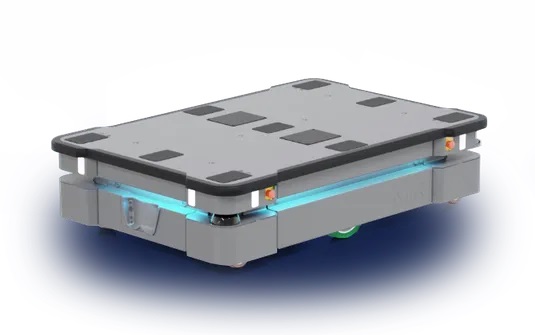AMR’s, the transport vehicles of the future.
You will most likely have seen (or even own) a vacuum robot wandering around a home. So now picture something bigger, often shaped like a box on wheels wandering around a factory floor instead. This is what an Autonomous Mobile Robot (AMR) is. It’s a type of robot that can navigate and operate in its environment independently, without being directly controlled or limited by a fixed path. Unlike Automated Guided Vehicles (AGVs) that can ONLY follow predetermined routes, AMRs use advanced sensors and software to make real-time decisions and adapt to dynamic environments.
Here’s a more detailed explanation:
- Autonomous Navigation:
AMRs can move through an environment without a fixed track or path, using sensors like cameras, lidar, and sonar to map and navigate their surroundings. - Real-time Decision Making:
They can identify and react to obstacles, adjust their routes based on changing conditions, and make decisions in real-time, by constantly scanning the environment around themselves. - Flexibility and Adaptability:
AMRs are well-suited for environments that require frequent changes or have many obstacles, making them suitable for applications like warehouses, manufacturing, and logistics. - Collaboration with Humans:
Many AMRs are designed to work alongside human workers, assisting with tasks like material handling, picking, and other processes.
Example:
In a typical manufacturing business, products at the “ready to sell” stage usually go to a warehouse. The process of transporting goods to a warehouse is time-consuming and labour intensive. Instead, once a box, carton or container etc. of product is ready to go, an operator “calls’ the AMR, perhaps using a laptop, to pick up the product. The AMR arrives at the station; the operator places the product on the AMR and directs it to the warehouse using the laptop. The AMR leaves, navigating around items like e.g. people on the walkway, a pallet left in the corridor – anything in its way, until it reaches the warehouse, where the warehouse operator removes the product, and instructs the AMR to go “home”.
And in some highly automated systems the AMR will even stack the carton on the designated shelf and automatically update the warehouse stock system to add it to the inventory. This is all possible, thanks to the technology available today.
